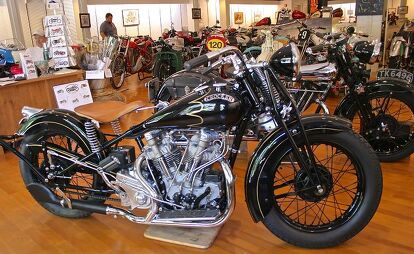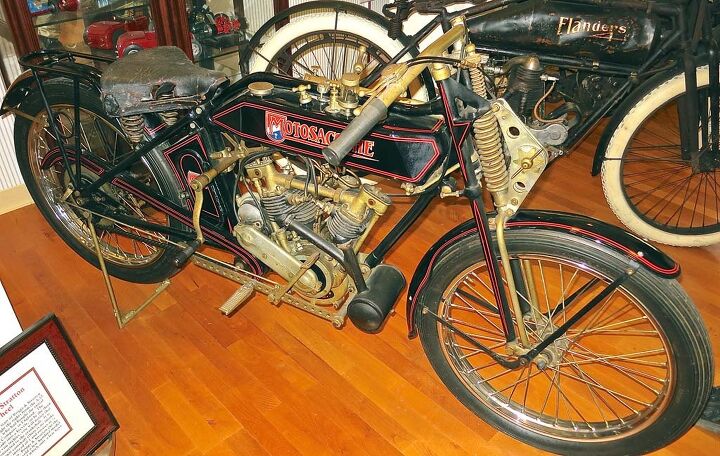Solvang Vintage Motorcycle Museum

An amazing moto collection in part of California's wine country
If you didn’t already know it was there, you’d never know it was there. The brick retail/office courtyard suggests maybe a cheese shop, an insurance agency or a jewelry store. Or a Brooks Brothers clothing store, which it once was.
But for the last 14 years, the commercial storefront on the south side of Solvang, Calif., has housed Virgil Elings‘ motorcycle collection. Situated two blocks south of where the general tourist traffic turns around, where the Danish village architecture ends, the Vintage Motorcycle Museum remains a semi-hidden gem. The gallery is open to the public from 11 to 5 on weekends, and by appointment during the week. Admission is $10. Elings occasionally makes the collection open to regional motorcycle groups and charges no admission.
Elings is an eclectic collector with many interesting tales to tell, so stay tuned for a follow-up story on this fascinating man.
First, let us take a selective photo ramble through the aggregation, which you will note clearly deserves the appellation of unique. While many of these machines exist in individual and factory collections around the world, few have the complementary nature of this assemblage. Elings’ interest spans the motorcycle timeline from the early days till now, with the emphasis on racing and high-performance machines.
The Collection
Because pictures speak a thousand words, below you’ll find dozens of photos, while extensive captions provide details and historical context. The motorcycles in these pictures are only about a third of the inventory in the Vintage Motorcycle Museum. (Or a fourth if you count the 30-odd bikes awaiting attention in the back room.) It’s well worth a visit if you’re in the Santa Barbara area.
For more info, visit http://motosolvang.com.

More by Tod Rafferty

























































































Comments
Join the conversation
Woops. Actually, that CZ is a 320, not a 125, and it started life as a 250. Then the Czechs changed the rules to allow only 2-strokes in the 250 class. So CZ bumped the twin to 320 to run in the 350 class, where it had to contend with the Jawa twin and Honda four. Sayonara.
Nice museum. Visited about 7-8 years ago on a trip to Santa Barbara on a couple of Wings. Well worth the time to find it.